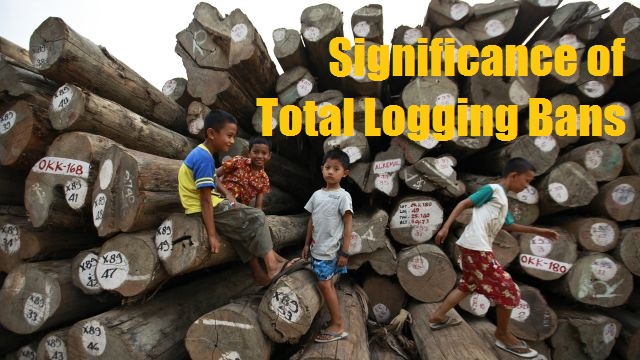Total logging bans are often used by governments all over the world to curb, check and restrain illegal logging activities and to better manage and preserve their forest cover and the ecology of the landscape. There is, of course, a certain degree of uneasiness on whether this is the right thing to do. The question still persists whether or not other initiatives available to total logging bans. It becomes critical, therefore, that total logging bans are studied too.
The forest in the Philippines is very rich in biodiversity. The numerous flora and fauna that could be found in tropical rainforests is due to the constant high temperature and humidity which characterize our normal weather condition. It is unfortunate, however, that many forests are threatened due to deforestation… and deforestation is caused by irresponsible logging activities. It is important to mention, at this point that logging in the Philippines is perceived as an “illegal” activity and anyone who is involved in the wood industry is an “illegal logger”.
Forestland largely form a sizeable part of landscape ecology. Deforestation is the single, most negative, factor that affects landscape ecology. A total logging ban, therefore, is also a big influencing factor in the ecology of the landscape. Preserving our last remaining forest cover is imperative to ensure quality life on our planet for the next generations.
The purpose and objective, therefore, of a study on the significance of total logging bans (as the primary government initiative) should focus on and detail the following background, issues and concerns:
- Give a brief history on logging in the Philippines so we could better understand the development of the wood industry to its present status;
- Look into the socio-economic importance of logging so we could gain better insights to the realities of logging as a basic means of livelihood and how it affects people as social units;
- Answer the question “Is total logging ban possible?” so we could explore the sustainability of a long-term logging ban;
- Make a general distinction between legal and illegal logging activities so we could separate the myth from reality;
- Determine the effects of total logging ban in the forest cover and ecology of the landscape so we could make baseline assumptions on the relationship between logging activities and biodiversity;
- Find ways and means to mitigate the effects of total logging bans as the best way to go but making certain that the necessary safety nets are provided to stakeholders in the wood and timber industry;
- Come up with a synthesis or an alternative approach in balancing the need for wood and the ecology so we can also consider other ways and means to a total logging ban; and,
- Provide a new framework on the effects of total logging ban in the ecology of the landscape.
Reforestation should be an integral part of timber utilization. Trees also have a lifespan and when trees die, the unutilized wood will decompose and return to the atmosphere in the form of carbon. Carbon sequestration or biological sequestration can only happen when trees are felled in their maturity. Premature harvesting of trees without the corresponding replenishment, through reforestation, is the single-biggest cause of forest cover loss. But is the declaration of total logging bans the only alternative? Or are there other options? I firmly believe there are. And, if there are, what then is the significance of total logging bans?
Thoughts to promote positive action…
(Please visit, like and share Pro-EARTH Crusaders on Facebook or follow me at http://antonantonio.blogspot.com/ and http://twitter.com/EarthCrusader/)

